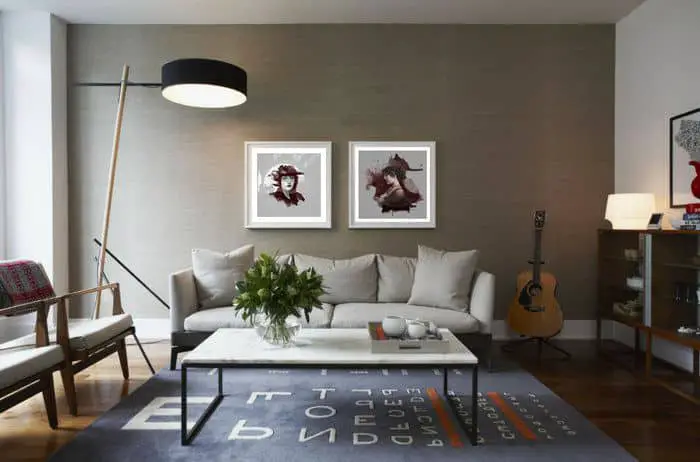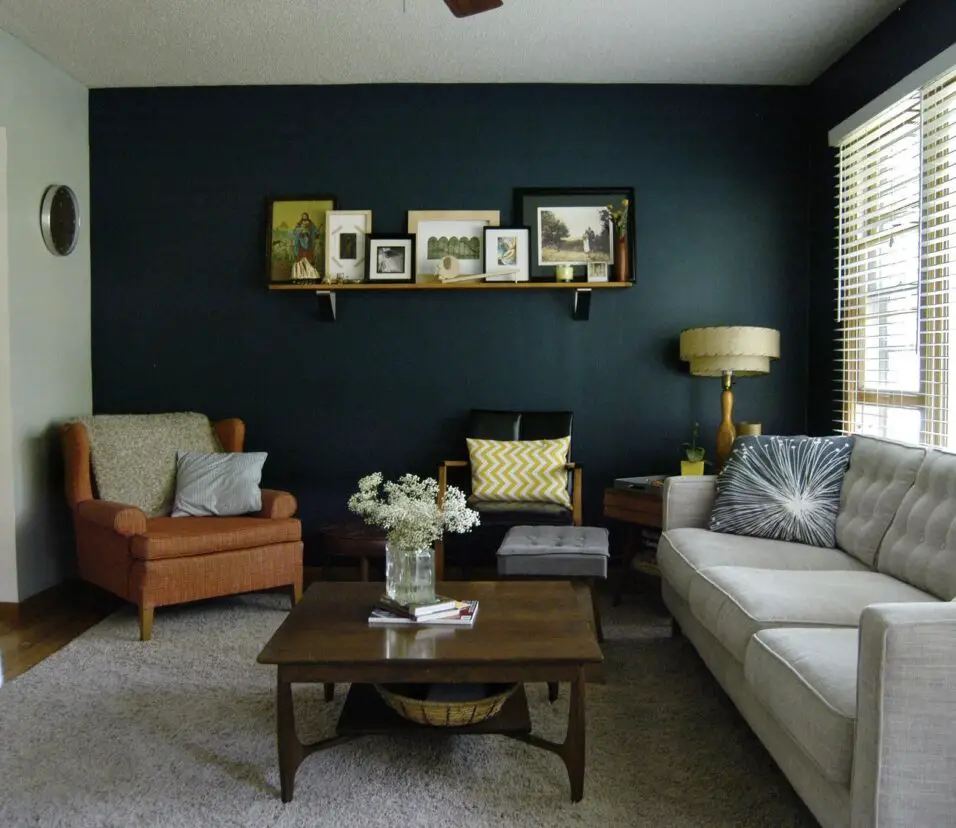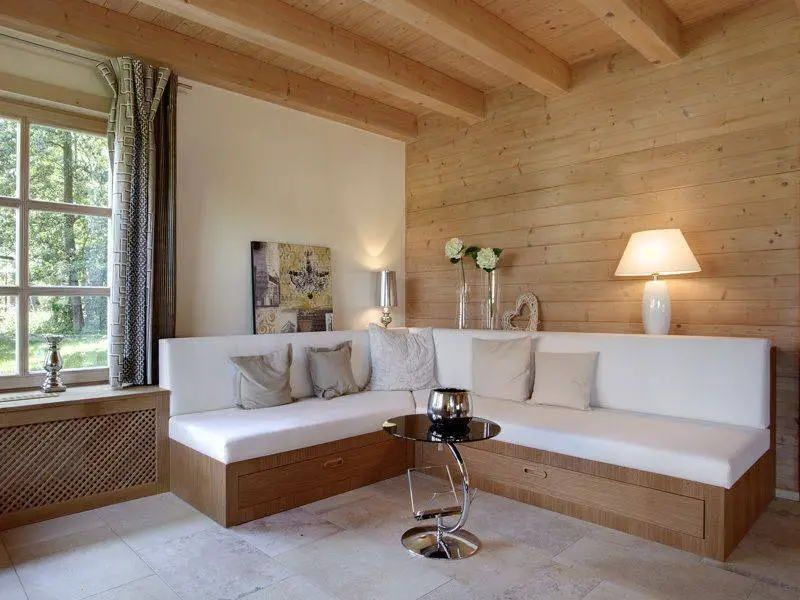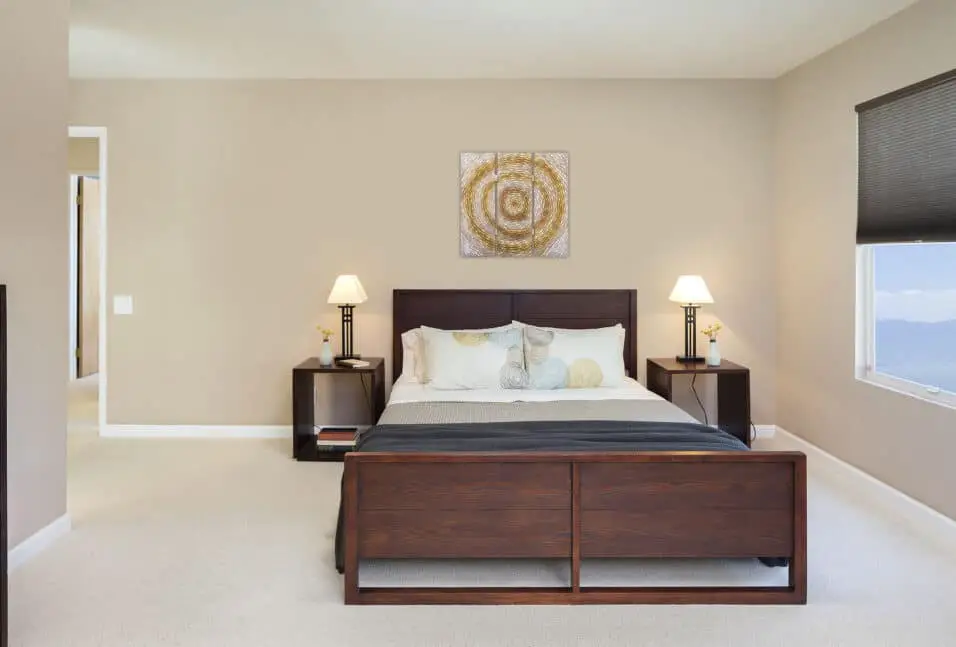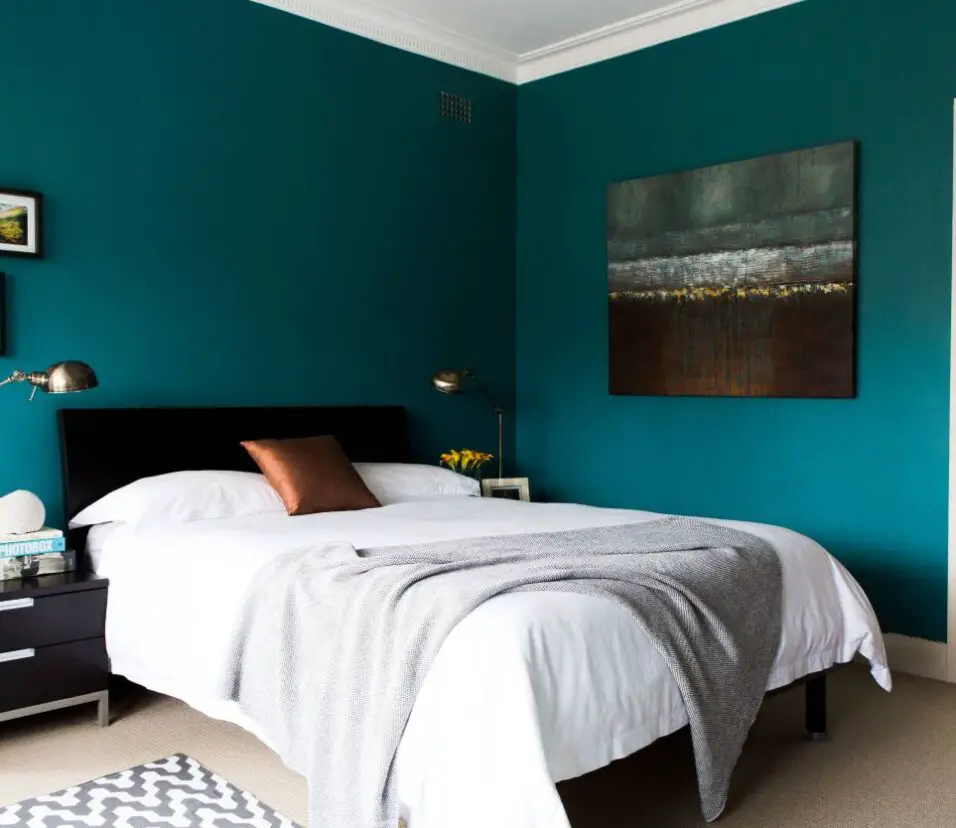What Accent Colors Go With Light Blue Walls
Introduction
What Accent Colors Go With Light Blue Walls: Choosing the right accent colors for your light blue walls can greatly enhance the overall aesthetic appeal of your space. Light blue walls create a serene and calming atmosphere, making them a popular choice for bedrooms, living rooms, and bathrooms. However, finding the perfect accent colors to complement the light blue can be a daunting task. In this article, we will explore various accent colors that harmonize beautifully with light blue walls, allowing you to create a cohesive and visually pleasing interior.
When it comes to selecting accent colors, it is essential to consider the undertones of your light blue walls. Light blue can have different undertones, such as cool or warm, which can influence the overall look and feel of the room. Cool undertones have a hint of green or gray, while warm undertones lean towards purple or pink. Understanding the undertones will help you choose accent wall colors that create a harmonious and balanced space.
One popular choice for accent colors with light blue walls is a crisp white. White provides a clean and fresh contrast to the light blue, creating a timeless and elegant look. Whether you opt for white furniture, curtains, or accessories, this combination will give your space a bright and airy feel.

What Colour goes best with light blue walls?
Blue pairs well with nearly all neutral shades, including white, brown, gray, and black. When selecting the right color to pair with blue walls, try varying the temperatures in your palette.
When it comes to decorating a room with light blue walls, choosing the right color scheme is essential to create a harmonious and visually appealing space. The color that goes best with light blue walls depends on the desired atmosphere and style you want to achieve. Whether you prefer a calming and serene ambiance or a vibrant and energetic feel, there are several color options that can complement light blue walls beautifully.
Creating a Calming Atmosphere:
If you want to create a calming and tranquil atmosphere in a room with light blue walls, opting for neutral colors is a great choice. Soft and muted tones such as beige, cream, or ivory can create a soothing effect when paired with light blue. These neutral colors provide a subtle contrast that enhances the light blue walls without overpowering them. Additionally, incorporating natural elements like wooden furniture or green plants can further enhance the calming ambiance.
Adding Warmth and Depth:
These colors create a cozy and inviting atmosphere, making the space feel more intimate. You can incorporate these warm colors through furniture, decorative accessories, or even artwork. Combining light blue walls with warm tones can create a balanced and visually appealing environment.
Creating a Vibrant and Energetic Feel:
Bright shades like coral, orange, or yellow can create a lively and cheerful atmosphere when paired with light blue. These vibrant colors can be incorporated through accent pieces such as pillows, rugs, or artwork. Adding patterns or textures in these bold colors can also bring a sense of dynamism to the space.
he color that goes best with light blue walls depends on the desired atmosphere and style you want to achieve. For a vibrant and energetic feel, bold colors such as coral or orange can be used.
What colours fit with light blue?
The colors that pair well with light blue include:
- Dusty rose.
- Peach.
- Lavender.
- Lilac.
- Navy blue.
- Midnight blue.
- White.
- Cream.
Introduction:
When it comes to choosing colors that complement light blue, there are several options that can create a harmonious and visually appealing combination. Light blue is a soothing and calming color that often evokes feelings of tranquility and serenity. It is commonly associated with the sky and the ocean, making it a popular choice for interior design, fashion, and various other creative fields.
Pairing light blue with the right colors can enhance its beauty and create a balanced and pleasing aesthetic. Whether you are looking to decorate a room, create an outfit, or design a graphic, understanding which colors work well with light blue is essential. In this article, we will explore some of the colors that fit perfectly with light blue and provide you with inspiration for your next project.
Colors that complement light blue:
One color that pairs exceptionally well with light blue is white. The crispness and purity of white create a clean and fresh look when combined with light blue. This combination is often used in coastal-themed designs, as it mimics the colors of the sky and the waves. Whether you choose to use white as the dominant color or as an accent, it will create a sense of lightness and airiness in the overall design.
Another color that complements light blue is gray. The softness and neutrality of gray provide a sophisticated and elegant contrast to the coolness of light blue. This combination is versatile and can be used in various design styles, from modern to traditional. Gray can be incorporated through furniture, accessories, or even as a wall color, allowing light blue to stand out and create a serene atmosphere.
Adding a touch of warmth to light blue can be achieved by pairing it with shades of yellow or gold. These warm tones create a beautiful contrast and add vibrancy to the overall color scheme. Whether you choose a soft pastel yellow or a rich golden hue, the combination with light blue will create a visually striking and inviting look.
For a more energetic and vibrant combination, light blue can be paired with shades of coral or peach. These warm and cheerful colors create a playful and lively contrast to the coolness of light blue. This combination is often used in summer-inspired designs or to add a pop of color to a neutral space.
Choosing the right colors to complement light blue can greatly enhance the overall aesthetic of a design. Whether you prefer a calming and serene look or a vibrant and energetic one, there are various options to explore. From the classic combination of light blue and white to the bold contrast of light blue and coral, the possibilities are endless. Experimenting with different color combinations and finding what resonates with your personal style and vision will ultimately lead to a visually pleasing and harmonious result.
What accent wall goes with blue?
Natural colors, such as chocolate, mossy green, grays, and whites, will pair well with blue walls. The gray-blue paint color in this room has a plucked-from-nature look that pairs well with other cool, earthy colors. The moss green pillows and dove gray couches work to create a tranquil space.
What accent wall goes with blue?
When it comes to choosing an accent wall to complement the color blue, there are several options that can create a stunning and harmonious look. Blue is a versatile color that can be paired with various shades and tones to achieve different effects. Whether you want to create a calming and serene atmosphere or make a bold statement, there is an accent wall that will suit your style and preferences.
Neutral Colors:
One option for an accent wall that goes well with blue is to choose a neutral color. Neutral colors such as white, beige, or gray can provide a subtle and elegant backdrop for the blue. This combination creates a balanced and sophisticated look, allowing the blue to stand out without overwhelming the space. Consider painting one wall in a neutral shade while keeping the remaining walls in a light or medium blue tone to create a visually appealing contrast.
Complementary Colors:
Another approach is to select a complementary color for the accent wall. Complementary colors are those that are opposite each other on the color wheel, and they create a vibrant and energetic contrast. In the case of blue, the complementary color is orange. Painting an accent wall in a warm shade of orange can create a striking and eye-catching effect. This combination works particularly well in contemporary or modern interiors, adding a pop of color and visual interest to the space.
Analogous Colors:
If you prefer a more harmonious and cohesive look, choosing an accent wall in an analogous color can be a great option. Analogous colors are those that are adjacent to each other on the color wheel and share similar undertones. For blue, the analogous colors are green and purple. Painting an accent wall in a shade of green or purple can create a soothing and balanced atmosphere, especially when paired with a lighter shade of blue on the remaining walls.
Overall, the choice of accent wall to go with blue depends on the desired mood and style of the space. Whether you opt for a neutral color, a complementary color, or an analogous color, the key is to create a harmonious and visually appealing combination that enhances the beauty of the blue and complements the overall design of the room.
What colors pair well with baby blue?
The colors that pair well with light blue include:
- Dusty rose.
- Peach.
- Lavender.
- Lilac.
- Navy blue.
- Midnight blue.
- White.
- Cream.
Introduction:
Baby blue is a delicate and soothing color that evokes a sense of tranquility and innocence. When it comes to pairing colors with baby blue, there are several options that can enhance its softness or create a striking contrast. The choice of colors depends on the desired effect and the overall aesthetic one wishes to achieve. Whether you are looking to create a serene and calming atmosphere or a vibrant and energetic space, there are various color combinations that can complement baby blue beautifully.
Soft and Subtle Combinations:
One of the most popular choices for pairing with baby blue is a monochromatic color scheme. This involves using different shades and tones of blue to create a harmonious and cohesive look. Lighter shades of blue, such as sky blue or powder blue, can be used alongside baby blue to create a soft and serene ambiance. This combination works well in bedrooms, nurseries, or any space where a calming atmosphere is desired.
Another option for a soft and subtle combination is to pair baby blue with pastel colors. Soft pinks, pale yellows, and mint greens can all complement baby blue beautifully. These pastel hues add a touch of femininity and elegance to the overall color palette. This combination is often used in wedding decor, baby showers, or any event where a delicate and romantic ambiance is desired.
Contrasting and Bold Combinations:
If you are looking to create a more vibrant and energetic space, pairing baby blue with bold and contrasting colors can be a great choice. One option is to combine baby blue with bright yellow. This combination creates a cheerful and sunny atmosphere, perfect for a kitchen or a playroom. The contrast between the coolness of baby blue and the warmth of yellow adds a dynamic and lively touch to the space.
For a more dramatic and sophisticated look, pairing baby blue with deep navy or royal blue can create a striking contrast. This combination works well in living rooms or dining areas, where a touch of elegance and depth is desired. The combination of light and dark blues adds visual interest and creates a sense of balance and harmony.
Baby blue is a versatile color that can be paired with a wide range of colors to create different effects. Whether you prefer soft and subtle combinations or bold and contrasting ones, there are numerous options to choose from. The choice of colors ultimately depends on personal preference and the desired atmosphere of the space. By experimenting with different color combinations, you can create a visually appealing and harmonious environment that reflects your unique style and taste.
What are the 3 best colors that go together?
Sets of 3 colors that go great together
- Yellow, red, and blue.
- Green, orange, and purple.
- Teal, magenta, and gold.
Color matching is based on society and personal taste. There are some color combos that look good on everyone. This is why three colors that go well together work.
It’s great to be blue, yellow, or green. Three colors make a lively mix for outside. Blue is calm, and yellow makes you feel alive. Green is a mix of blue and yellow. It can wake you up or calm you down. Colors that go together are good for both interior design and branding.
Black-white-red is another interesting color mix. Make black and white stand out. Black stands for power and mystery, while white stands for cleanliness and ease. Red makes you feel things. The look of fashion, graphic design, and home decor is standard when these colors are used together.
Tones that designers like are light gray mint green and soft pink.
Mint green is soothing, and pastel pink is kind. The colors look good against a soft light gray background. This mix is used by designers to make the nursery and bedroom more relaxing.
If you like these color combos, think about what they’re used for. Colors make us feel different things. When choosing colors, think about how they make you feel and what they mean. Use different shades, tints, and tones to make color schemes that go well together.
Function and personal choice Pick the three best colors in a set. When choosing matching colors, you should think about the situation, color psychology, and your own taste. A lot of different accent colors can brighten up light blue walls. Blue tones that are lighter or darker than the wall are often used in monochromatic color schemes. Bedrooms and baths are better when it’s quiet.
Bright colors stand out. Accents of coral or peach look good with pale blue walls. Orange and yellow colors make the room feel better. Contrast brings out the beauty of the blue walls.
Opt for secondary colors based on your style and mood. This classic style is set apart by its light blue walls and gray or beige decorations. Add some lime green and hot pink to the decor to make it look new.
How can I choose accent colors that enhance the overall look of my light blue walls?
When it comes to choosing accent colors that enhance the overall look of your light blue walls, there are a few factors to consider. First and foremost, you’ll want to think about the mood or atmosphere you want to create in the space. Light blue walls often evoke a sense of calmness and serenity, so you’ll want to choose accent colors that complement and enhance this feeling.
One approach is to opt for colors that are analogous to light blue on the color wheel. Analogous colors are those that are adjacent to each other and share similar undertones. For example, shades of green and purple can work well with light blue walls. These colors create a harmonious and cohesive look, as they share a common color family.
Another option is to choose complementary colors that are opposite light blue on the color wheel. Complementary colors create a striking contrast and can make your light blue walls pop. In this case, warm tones like oranges and yellows can be great choices. These colors create a vibrant and energetic atmosphere, balancing out the coolness of the light blue walls.
Are there any specific color combinations that work particularly well with light blue walls?
When it comes to complementing light blue walls, there are several color combinations that work exceptionally well. One popular option is to pair light blue walls with crisp white accents. The contrast between the cool blue and the bright white creates a fresh and airy atmosphere. Another great choice is to combine light blue walls with shades of gray. This combination adds a touch of sophistication and elegance to the space.
In addition to white and gray, light blue walls also pair beautifully with various shades of beige and cream. These neutral tones create a soft and calming ambiance, perfect for creating a cozy and inviting space. These warm tones provide a vibrant contrast to the cool blue, creating a visually appealing and energetic atmosphere.
What factors should I consider when selecting accent colors for light blue walls?
When selecting accent colors for light blue walls, there are several factors to consider in order to create a harmonious and visually appealing look. One important factor is the color temperature. This can include shades of blue, green, and purple. These colors will complement the light blue walls and create a cohesive and calming atmosphere in the space.
Another factor to consider is the intensity or saturation of the accent colors. Opt for lighter or muted shades of the chosen color to maintain a balanced and soothing ambiance. For example, if you choose a green accent color, consider shades like mint green or sage green.
Additionally, it is important to consider the overall style and theme of the space. Different accent colors can evoke different moods and aesthetics. For a more modern and contemporary look, consider pairing light blue walls with accent colors like gray or silver. If you prefer a more vibrant and energetic atmosphere, you can choose accent colors like yellow or coral. Ultimately, the choice of accent colors should reflect your personal taste and the desired ambiance of the room.
Can you provide examples or suggestions of accent colors that create a visually appealing contrast with light blue walls?
When it comes to creating a visually appealing contrast with light blue walls, there are several accent colors that can work wonders. One option is to go for warm, earthy tones such as burnt orange or mustard yellow. These colors provide a striking contrast against the coolness of light blue and add a sense of warmth and depth to the space. Another option is to opt for bold and vibrant colors like coral or fuchsia. These colors create a lively and energetic contrast, making the light blue walls pop and adding a touch of excitement to the room.
For a more sophisticated and elegant look, consider pairing light blue walls with accent colors like charcoal gray or navy blue. These darker shades create a strong contrast and add a sense of depth and richness to the space. Additionally, metallic accents such as gold or silver can also create a stunning contrast with light blue walls. These metallic tones add a touch of glamour and sophistication, creating a visually appealing contrast that catches the eye.

Conclusion
Choosing the right accent colors for light blue walls can greatly enhance the overall aesthetic appeal of any space. Light blue walls create a soothing and calming atmosphere, making them a popular choice for bedrooms, living rooms, and bathrooms. However, to truly make these walls stand out and create a harmonious look, it is essential to select the right accent colors. By considering the desired mood, the existing decor, and personal preferences, one can create a stunning color scheme that complements the light blue walls.
One option for accent colors that go well with light blue walls is a neutral palette. Colors such as white, beige, and gray can create a clean and sophisticated look. These neutral tones provide a subtle contrast to the light blue walls without overpowering them. Additionally, they allow other elements in the room, such as furniture and artwork, to take center stage. This color scheme is particularly suitable for those who prefer a minimalist or contemporary style.
For those looking to add a pop of color to their light blue walls, vibrant accent colors can be a great choice. Colors like coral, yellow, or orange can create a cheerful and energetic atmosphere. These warm tones create a beautiful contrast against the coolness of the light blue walls, adding visual interest and creating a lively ambiance. Incorporating these colors through accessories such as throw pillows, curtains, or artwork can bring a sense of vibrancy and personality to the space.
Another option for accent colors is to draw inspiration from nature. Shades of green, such as sage or mint, can create a fresh and tranquil environment when paired with light blue walls. These colors evoke a sense of serenity and can be particularly suitable for bedrooms or bathrooms. Additionally, incorporating natural materials like wood or rattan furniture can further enhance the connection to nature and create a cohesive and inviting space.
When choosing accent colors for light blue walls, it is important to consider the desired mood, existing decor, and personal preferences. Neutral tones can create a clean and sophisticated look, while vibrant colors can add energy and personality. Drawing inspiration from nature can bring a sense of tranquility and freshness to the space. Ultimately, the perfect accent colors will depend on individual taste and the overall style of the room. By carefully selecting and incorporating accent colors, one can create a visually appealing and harmonious color scheme that complements the light blue walls.




